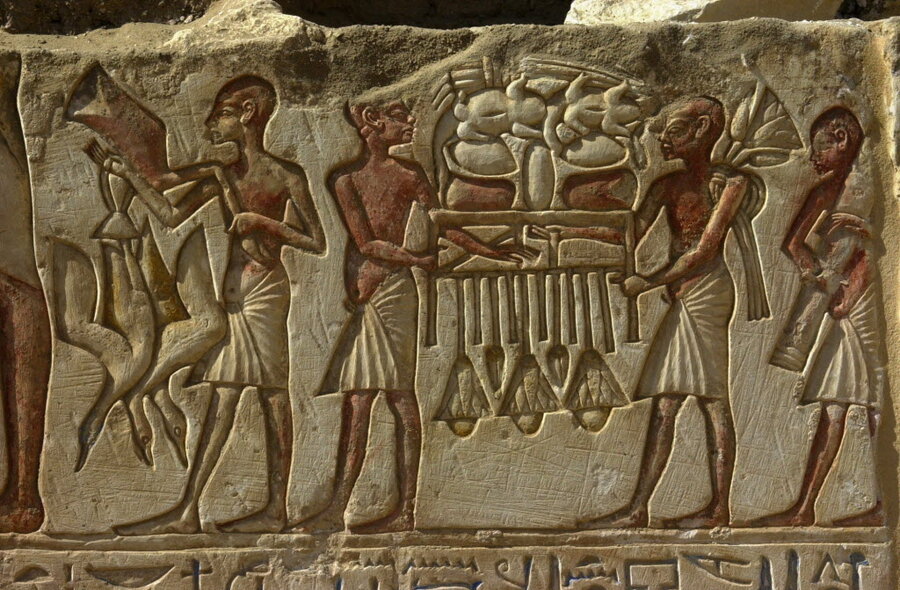Ancient Egypt's transition to statehood happened faster than thought
Loading...
Sometime in the 4th millennium BC, the pastoralists that had canvased the Sahara desert, packing up and moving in search of new hunting game, began to cluster around the Nile River Valley. There, the people rigged up villages and put down cereals plots. Life achieved a new, more regular, rhythm.
And in that same millennium, King Aha, the first of the eight dynastic rulers, ascended to power and pulled together those villages into a state: Egypt.
Now, a new paper published in the British journal Proceedings of the Royal Society A suggests that all this happened much faster than previously thought. According to the new research, Egypt’s transition from a loose collection of villages to one of history’s most enthralling political states took just 600 to 700 years, in dramatic contrast to the much longer transition in neighboring southwestern Asia.
“What we find is actually this period was shorter than people imagined,” said Michael Dee, a researcher at the Research Laboratory for Archaeology at the University of Oxford and the lead author on the paper, in an email. “Also, we find that the process was very different in Egypt from Mesopotamia – causing one to wonder whether there is a 'formula' for state formation, or whether each early state developed in its own way.”
Egypt is often cited as the first example of the textbook definition of a state: a political institution that has territorial borders. But an exact timeline for the mighty state’s formation has been elusive, as estimates for King Aha’s ascension have varied, putting it somewhere between 3400 to 2900 BC.
In part, the wideness of that range has been due to inexact methods of dating Egypt’s major plot points. Since about 1899, Egyptian funeral pot styles have been used to distinguish one predynastic or dynastic period from another. But that method of dating provides just a relative timeline of Egyptian history, no absolute dates, says Dr. Dee.
“Ceramics, stone artifacts and the like can only ever offer ordering information. This pot comes before that pot etc.,” said Dee. “Information like that is not anchored in any way to the calendar time-scale.”
In the latest research, the team, all from Britain, revisited the Egyptian timeline with radiocarbon dating. About 100 samples of organic material, including hair and bones, were collected from ancient settlement Tell es-Sakan, in the Gaza Strip, and museum collections. Much of the material was buried with the kings of Egypt, providing telling data points for when those kings died and their reigns brought to a close. Remains from basketry and seeds found in graves were also used as data points for predynastic Egypt.
The radiocarbon data was then combined with previous estimates for pivotal Egyptian dates and then fed into a mathematical model, which generated the probabilities that certain events happened within certain timeframes.
In the new timeline, the date at which pastoralists settled down into villages, marking the second half of the Egyptian predynastic period, is plotted about 200 to 300 years later than it had appeared on previous timelines, which had put the date at about 4000 BC. At the same time, the model calculated a 68 percent chance that the beginning of King Aha’s rule was sometime between 3111 and 3045 BC, with a median date of 3085 BC.
Altogether, the results condense the span of the Egyptian proto-state to about 600 to 700 years long, suggesting that in just that short length of time, relative to the long chronicle of human existence, Egypt morphed from a smattering of desperate villages into a unified state – and one, no less, that until the Greeks and then the Romans sailed in would for thousands of years rank among the most powerful and advanced civilizations on the planet.
And the quickness of Egypt’s transition is even more impressive compared to the statehood experience in southwest Asia. There, the transition from a loose collection of cities organized around grain farming into a bona=fide Mesopotamian state took somewhere between four and five millenniums.
“This study allows us to see these very different trajectories of human history,” said Alice Stevenson, a curator at the Petrie Museum of Egyptian Archaeology and a co-author on the paper, in an email. “Elsewhere in the world – like in Mesopotamia – there was a much longer period of village based life prior to the emergence of the state and many millenniums of agricultural production before kings and cities emerged.”
That dramatic difference between two neighboring regions is curious, and the researchers still don’t know what spurred Egypt’s rapid collusion into a state or what took Mesopotamia so comparatively long.
“What we've provided is a temporal framework, but this still leaves many questions open such as the mechanisms of state formation,” says Dr. Stevenson. “So in effect we've suggested the when, but there is much 'why' and 'how' still to address.”








